Winter cycling offers the opportunity to retain, and even enhance, your cycling skills over the whole year. There are very few days during the winter in which cycling becomes impossible. If you’re able to cross-country ski, then you’re ready to cycle.
The secret to successful winter cycling is that you stay warm and dry, maintain hydration, minimize sweating, and avoid injuries. In Canada, especially Ottawa, it can get as cold as -9.8 °C. Did you that the record-coldest temperature there is 37.2 °C (-35 °F) in January?
How To Cycle In Winter- 13 Things To Know
So how do you go cycling in such mind-freezing temperatures? Good question! There are some factors that you have to weigh before heading out. Let me explain them to you.
1. Analyze The Weather
In Ottawa, temperature extremes of -30 to +35 (Celsius) are not unusual, and there is an average of 2.2 meters (~6-1/2 ft) of snow in Ottawa during winter. The weather probably has the most effect on whether people will cycle, or bus/drive.
Check The Air Temperature
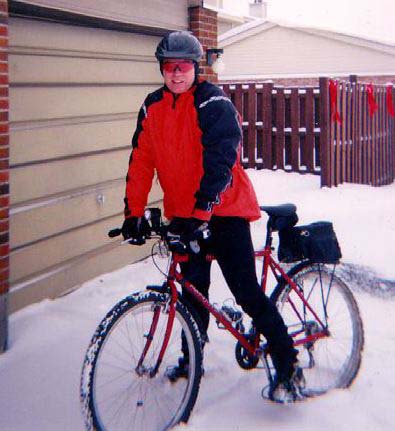
In warm weather, this usually results in body sweat to lower body temperature.
In cold weather, the body will close down blood flow to prevent excessive cooling, the body acts like a living radiator for temperature control. If the core temperature begins to drop, the brain will shut off blood flow to the hands and feet and then arms and legs if cooling continues.
The body loses up to 40% of its heat through the head, but the brain will not shut off blood flow to the head for rather evident, but selfish reasons.
Blood flow also provides heat to the extremities, like hands and feet. Thus, if the body can retain its core temperature – it will share blood flow, and thus warmth, with other body parts. I find the best cycling temperatures to be 10 to 20 above and -15 to -25 below. The reason for this is that in the above-zero temperature range, I can wear comfortable shorts and a cycling jersey and feel quite warm cycling for as long as I want without overheating. In the below-zero range, the clothing also keeps me comfortable for an extended amount of time and the roads are usually wet/slush-free.
I find cycling in wet -10 to 10-degree weather the most abhorrent. In winter, it seldom snows at temperatures below -15. But at temperatures at or near zero, it is frequently snowing, the roads are always slushy and wet from melting snow. Even in nice weather, the roads will be covered with melting snow/slush at the edges, making any cycling a ‘wet’ experience. The table shows the Weather recordings I made with my ride log since 1994:
Temperature Recording
| Month | Av. Temp (°C) | Range (°C) | Snow? | Rides |
|---|---|---|---|---|
| November | -0.1 | -12 to 20 | 11 (2) | 83 |
| December | -5.3 | -25 to 7 | 10 (1) | 66 |
| January | -11.7 | -29 to 4 | 12 (3) | 67 |
| February | -8.7 | -22 to 4 | 2 | 71 |
| March | -2.5 | -17 to 25 | 11 (2) | 97 |
In these 6 winters (1994/1995 to 1999/2000), out of a total of 908 days, I cycled on 384 of them (42%). Of all those rides, there was snow on the road for only 46 of them (12%), and only 8 of those were ‘challenging’ (2%).
The Wind Chill Factor
Besides the problems with the wind in the added work needed to cycle into it, wind accelerates the cooling of the body. Again, think of the body as a radiator, cold air running around the body pulls out more heat than normal. This is worsened as the temperature drops. With no wind, the cyclist is still producing his/her wind of 15 to 30 kmh in normal cycling. Adding a wind of 20 km, 30 km or more means a wind of 35 to 60 km. Wind chill, the accelerated cooling effect, becomes a problem.
Exposed skin will quickly freeze because the blood flow to the air is not sufficiently warm or fast enough to keep the skin temperature above zero. Wind is easy to protect against, by keeping all parts of the body covered. The only difficult area to completely cover is the face. A balaclava pulled down over your face will only leave your eyes exposed, and these should be covered by eyewear.
Wind Chill Table
| Wind KPH | Temperature (C) | ||||||||||
|---|---|---|---|---|---|---|---|---|---|---|---|
| 0 | 0 | 5 | -10 | -15 | -20 | -25 | -30 | -35 | -40 | -45 | -50 |
| 5 | 2.1 | -2.6 | -7.3 | -12.0 | -16.7 | -21.4 | -26.1 | -30.8 | -35.4 | -40.1 | -44.8 |
| 10 | -3.1 | -8.6 | -14.0 | -19.5 | -25.0 | -30.5 | -35.9 | -41.4 | -46.9 | -52.3 | -57.8 |
| 15 | -6.6 | -12.6 | -18.6 | -24.6 | -30.6 | -36.6 | -42.6 | -48.6 | -54.6 | -60.6 | -66.6 |
| 20 | -9.2 | -15.6 | -22.0 | -28.4 | -34.8 | -41.2 | -47.6 | -54.0 | -60.4 | -66.7 | -73.1 |
| 25 | -11.3 | -18.0 | -24.7 | -31.4 | -38.1 | -44.8 | -51.5 | -58.2 | -64.9 | -71.6 | -78.3 |
| 30 | -12.9 | -19.9 | -26.8 | -33.8 | -40.7 | -47.7 | -54.6 | -61.6 | -68.6 | -75.5 | -82.5 |
| 35 | -14.3 | -21.4 | -28.6 | -35.7 | -42.9 | -50.1 | -57.2 | -64.4 | -71.6 | -78.7 | -85.9 |
| 40 | -15.4 | -22.7 | -30.0 | -37.4 | -44.7 | -52.0 | -59.4 | -66.7 | -74.0 | -81.4 | -88.7 |
| 45 | -16.3 | -23.8 | -31.2 | -38.7 | -46.2 | -53.7 | -61.1 | -68.6 | -76.1 | -83.5 | -91.0 |
| 50 | -17.1 | -24.7 | -32.2 | -39.8 | -47.4 | -55.0 | -62.6 | -70.2 | -77.8 | -85.3 | -92.9 |
| 55 | -17.7 | -25.4 | -33.0 | -40.7 | -48.4 | -56.1 | -63.8 | -71.4 | -79.1 | -86.8 | -94.5 |
| 60 | -18.2 | -25.9 | -33.7 | -41.5 | -49.2 | -57.0 | -64.7 | -72.5 | -80.2 | -88.0 | -95.8 |
2 There Will Be Precipitation
This alone has probably the most effect on cycling, in summer and winter. Few of us like getting wet while riding. Riding while wet completely changes the comfort level at cooler temperatures. I have found it the most uncomfortable and coldest rides to be wet and riding at temperatures near freezing. I would much rather cycle in -20-degree weather than be wet and cold.
Wear Waterproof Clothes
Staying dry is of utmost importance the colder the temperature. Wearing rain pants and a jacket, i.e. Goretex or something breathable, makes it easy to keep most of the body dry. Unfortunately, it is harder to keep exposed areas like the head, feet, and hands dry in slush or cold rain. There are solutions to keeping completely dry, but these cost money – but I must say it is most worthwhile.
Try To Keep Your Feet Dry
Keeping the feet dry is harder because the feet are closer to the road and wet. Wet can come from your tire road spray and from passing traffic. Installing good fenders on your bike will keep your feet dryer and bike components dry as well. Wearing shoe covers such as Goretex and neoprene will keep your shoes drier. Wearing Goretex sock liners will keep your feet dry even if your shoes get wet. The former option is the one I use and prefer. Shoe covers in combination with fenders keep my feet 100% dry even in the wettest, slushiest weather.
Hands are easier to keep dry by wearing waterproof gloves or mitts or wearing treated leather liners over the mitts. Wearing a helmet cover will keep your head mostly dry, although your face will always get wet as it’s exposed. The body always keeps blood flowing to the head, so keeping your face dry is not too much of a problem in terms of feeling cold.
Having cold wet feet will cool the blood flow off quicker, prompting the body to shut off blood flow to the feet if the core body temperature drops. Cold wet feet are problematic in terms of comfort and the length of time you will be able to cycle.
3. Try To Take The Road
For the most part, winter cycling is on dry smooth road surfaces. Bike paths are inaccessible, but roads are usually in excellent shape 88% of the time. The other 12% of the time the roads will be covered in snow, and 2% of the time the roads will be covered in ice/hard-packed snow where cycling is difficult.
Nothing needs to be said about your cycling abilities for 88% of winter riding, it’s the last 12% that suggestions are needed. It should be noted that riding in any condition in which the road surface is covered has problems concerning the quality of the surface under the snow or ice. Hopefully, you will have had experience traveling the route before having to travel on it while it is snow-covered.
4. It’s Easier To Cycle In Freshly Fallen Powder Snow
Cycling in fresh falling snow is a nice experience. The snow smoothes out all the roughness of a road and makes riding unique. Riding in freshly fallen powder snow of up to 10 cm is not a problem at all. Riding in wet snow can be accomplished up to about 5 cm in depth without much difficulty, deeper powder or wet snow will start to slow you down and require more work to pedal through.
Riding in snow that has been traveled on, after a few hours or the day after a heavy snowfall, can be difficult. Car, truck, and bus tracks tend to pack down the snow quite hard into ruts, making it hard to get out of if you happen into one. As the time after a snowfall lengthens, the effects of salt and traffic will turn the snow into slush, then water.
Cycling in ‘dry’ fallen snow is much easier, more comfortable, and better for the bike than riding in wet snow or slush. Fortunately, for most of our winter, Jan and Feb., the temperatures tend to remain on the cool side. Fallen snow quickly gets plowed off the roads, and the transition from slush/water to a dry road can occur in a few hours. Cycling in March is my least favorite because of the warming temperatures and the almost continual slush and watery road conditions.
5. The Slush Biuld-Up Makes Things Difficult
Be wary of riding on roads where there is a slush build-up along the sides and in the center lanes. Typically, cars will give you some room as they pass you – but their right-side tires are usually then traveling in the slush in the center, meaning, you are going to get splashed frequently with cold, wet, icy slush. Even if it means snow-covered, riding on less traveled roads is usually more comfortable.
6. Watch Out For The Icy Surfaces
In cases of poor snow removal, usually when there is only a few cm of snow and there is no snow removal, packed snow quickly turns to an icy surface. The particularly evident at corners, stop signs, and traffic lights.
Be aware of potential packed snow conditions and check out the first few intersections when you start your ride. The best way to negotiate an icy road is to not be on it. Traveling at the extreme right edge of the road, or in the center of the vehicle tire tracks, in the unpacked snow is the best way through the obstacles.
Explore our guide to discover the best cycling routes for your ride.
7. Better To Get Metal-Studded Tires
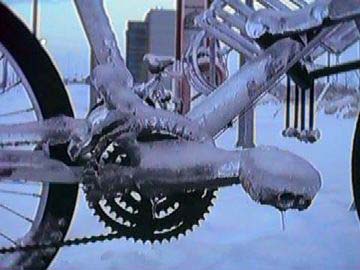
The freezing rain may fall after a small snowfall, meaning there is a slight layer of snow that your bicycle can break into under the ice. This is probably the only icy road condition you could travel in.
Bicycling perk is not having to scrape ice off your vehicle, or is it?
8. Layer Yourself According To Your Comfort
The secret to winter warmth is layering your clothing, and knowing your body’s physiology in terms of heat generation. I know that I am comfortable wearing clothing that wouldn’t keep me warm walking for more than 15 minutes. But cycling generates heat of its own. Thus the body needs less heat loss prevention than one would usually wear in cold weather. Cycling with excessive clothing restricts movement and can cause too much sweating. Being wet from sweat isn’t much different than being wet from rain, it alters your comfort and warmth level.
It is essential to at least modestly cover all exposed skin. The face is an exception that can be ignored till more extreme sub-zero temperatures. But covering the head, and helmet vent holes, and wearing windproof gloves and shoes will do most of the job in keeping warmth in.
9. Put On A Helmet Visor
I wish someone would manufacture a bike helmet, with no vent holes. If you think about it, a helmet is made from the same material they make insulation out of. The 1-2″ of Styrofoam in a helmet is more than ample to keep your head warm IF you cover up all the vent holes.
I used duct tape for several winters, which is fine on an old helmet. The duct tape glue is tough to get off the helmet if you want to use it again in the summer. I’ve been using a Goretex helmet cover, which I find excellent. Even in the coldest weather, I just wear a helmet, a simple fleece cap, and a face balaclava, my hair is soaked with sweat after a ride.
I would also highly recommend the use of a helmet visor (for cycling in all seasons). The visor keeps rain and snow from directly hitting the eyes. It provides good sunshade, and at night, you can move your head down to keep the glare from headlights from blinding you, yet still see a reasonable distance up the road.
To use a visor with a helmet cover, I just glued small Velcro fasters (appropriate ones) to the inside and outside of the cover. The inside cover is now fastened to the Velcro on the helmet, and the visor is Velcroed to the cover. (Hint: use wax-heated glue)
10. Winter Clothing Checklist
Early spring and late fall are the most difficult periods to cycle in. Temperature extremes can vary from -5 to +30 in one day, meaning having to carry jackets, tights, and gloves as well as shorts and short-sleeved shirts.
During the core winter months, plan on always wearing a basic set of clothing:
- Windproof running shoes or bicycle shoes,
- Thick socks,
- Thermal tights or better, Goretex tights,
- Cycling jersey under a long sleeve turtle neck
- Goretex-type outer shell,
- Ear muffs, or cycling cap
- Helmet with holes covered,
- Long sleeve gloves
- Eye-wear.
Carry with you an extra pair of socks, waterproof socks, rain pants, a Balaclava, and overmitts. These items will take up the room in a waist pouch. On some days, you will want to wear additional clothing layers like long underwear and a fleece or ski jacket liner.
For two years, I cycled with sweatpants, long underwear, and ‘baggies’ for sock liners. It was very uncomfortable and spending a few dollars on bicycle-specific warm clothing is worth every cent. Ideally, bicycle-specific footwear would be the best to use if it was sufficiently warm to wear. I’m ridden with Lake mxz300 winter shoes for two winters now, and have nothing but good to say about them. I seldom wear more than a pair of wool socks, and the shoes are wind and waterproof. In extreme cold, I wear a set of over-booties to keep more heat in. Here is a checklist according to the temperature:
| Temperature Range (°C) | Clothing and Accessories |
|---|---|
| 0 to -15 | Thick tights (fleece lined with Goretex shell), sweat-wicking shirt/turtleneck, Goretex/windproof jacket, long finger gloves, thick socks, covered helmet vents, ear muffs, windproof footwear |
| -15 to -25 | Add long underwear, fleece/similar jacket liner, balaclava (at -20), scarf, thin and thick socks with boot covers, ski gloves/lobster mitts |
| -25 to -40 | Same as above, additional pant lining/outer pant shell, fleece underwear, balaclava pulled over face, lobster mitts, thin thermal socks, thick socks with boot covers. Goretex sock liner and electric socks for longer rides. Wool sock over running shoe. |
| Below -40 | Same as above, considering mobility constraints. Riding in sunny weather helps, feeling cold for half an hour or less in nighttime commutes. Feet and face may feel cold at the end. |
11. Try Getting A Cleated Pedal System
I also highly recommend using a cleated pedal system. Although you might think the cleats would jam with snow/ice or be hard to release they are maintenance-free and give you excellent control in bad riding conditions. (After all, they are designed to work in much worse off-road situations). I’ve fallen off my bike many many times wearing running shoes because they get wedged in the pedal cages and can be very slow to get out. SPD-style clipless pedals release during the motion of putting a foot down.
12. It’s Better To Buy A Bicycle Light
The sun rises as late as 7:45 am and sets as early as 4:15 p.m. in early winter. The transition from less than 9 hours of daylight to just 12 hours takes 3 months on each side of the winter solstice. Commuting to any 8-hour-a-day job means that one will be riding in or home (or both ways) in the dark at least 2-3 months of the year.
Lights on the bike are essential as one may expect to be driving home or to work in the dark several times over the winter. Lighting has two purposes to enable you to see what lies ahead of the lamp and to let others see you. On a bicycle, carrying enough wattage and power to facilitate the former takes planning and some money. Rechargeable batteries require a charging schedule to maintain the life of the batteries.
The more simple lighting systems allow others to see you, and using more powerful lights will potentially let you be seen from farther away. The problem with simple lighting systems is that the batteries drain even faster in cold weather. You cannot leave the lights out in the cold for very long before they stop working.
So while it may be cheaper to buy a $20 bicycle light, the costs of buying a set of batteries each week will quickly add up to $50 or $60 in battery costs over the winter.
(Tip: buy a 12-volt bike lighting system, it is much easier to find a variety of wattage for the light bulbs)
13. Avoid Riding Your Expensive Bicycle
Don’t ride your best or most expensive bicycle in winter – but don’t ride a piece of junk either. There are several issues to cover with the bicycle itself in winter riding, but having the most comfortable bicycle with the best components has to be weighed against the abuse it will take.
I’ve ridden a ‘junker’ over two winters, and have found it slow, heavy, uncomfortable and continually breaking down – winter riding was not a great experience. I purchased a used ‘mid’ level bike and have found it a pleasure to ride and easy to maintain.
Plan to spend about $200 on a good used bike for winter use. I would recommend the following configurations:
| Feature | Description |
|---|---|
| Bike Type | Mountain-style bike designed for less than ideal riding conditions such as mud and dirt. |
| Tires |
|
| Components |
|
| Frame Material |
|
| Lubrication | Use good dry lube for chain and derailleur to prevent dirt and grime buildup. |
| Panniers | Panniers for carrying extra clothing. |
| Pedals | Choose pedals suitable for your footwear (Refer to Footwear and All Weather Sports pages for options). |
| Fenders and Mud Flap | Install fenders and a front mud flap for better protection. |
Although obvious, these components can cause problems if improperly installed. I installed my own set on a suspension fork, using zip-ties, it was not a pretty picture when the ties snapped and my front wheel seized.
Winter Equipment I Highly Recommend
- A simple Goretex helmet cover.
- A good windproof jacket. A Goretex style jacket will keep the heat in, still let your perspiration out, and is light.
- Semi-Goretex cycling pants. These have a Goretex covering over the front half of the pants, with normal stretch nylon at the rear.
- Thick cycling lobster gloves.
- Lake MX300 shoes, your feet will stay dry and very warm.
- Nite Rider digital Pro lighting system, w/ rear flasher.
How To Take Care Of Your Bicycle In Winters
Your winter ride will work much better if you can bring your bicycle into the warmth at least once a day. You will even have to plan when you should bring your bicycle indoors, do not bring your bicycle inside unless you can wipe it down and dry it off before it is to go outside again. Letting a bicycle begin to thaw will cause condensation to form on everything, and it will immediately freeze if brought back outside.
(Note: this isn’t much of a problem with temperatures above -10°C) If you need your bicycle for frequent outside rides, keep it outside between rides and only bring it in when you know it can dry completely.
When you bring your bicycle inside, ‘bounce’ off any loose snow or ice, and then let the bicycle sit and warm up for about half an hour. Then wipe the bike down completely, including the chain and derailleur. Winter riding in the snow alone is no worse for the bicycle than riding in the rain, but the addition of road salt plays havoc with metal bicycle parts.
In cases of wet snow and slush conditions, spray the bike off with an aerosol water sprayer while wiping the bike down. Wait until the bicycle is dry before adding lube. In dry riding conditions, lube can last a week or more, but may have to be reapplied daily in slush conditions.
I recommend a lube like White Lightning, the caveat is that the lube must be DRY before you head out for a ride. This means applying the lube after your ride so that it has time to dry before the next ride. Maintaining your bicycle with frequent cleaning and lubing over the winter will extend the life of the bicycle and its components for several years.
Frozen cables will be the most common cause of problems in winter riding. Using ‘slick’ or Teflon-type cables can cure this. These cables are more expensive than normal, but then they work better too. You can ride with regular cables if you lube them weekly with a dry lube like White Lightening.
Cables freeze because condensation forms on the wires and then freezes to the cable liner when you go outside. This can occur in 5 or 10 minutes in cold weather. This is the main reason not to bring your bicycle inside unless it can dry completely. Wax lube-like White Lightning coats the cables with paraffin which resists condensation buildup and doesn’t freeze to the cable liners.
Oil lubes are a quick and dirty way to keep your bicycle running in winter, oil doesn’t freeze and it does displace water – thus preventing freezing. However, oil collects a lot of dirt and debris – wearing your bicycle’s components faster.
When taking the bicycle outside after a snowfall, let the bicycle ‘sit’ outside for 15 minutes before riding it. The bicycle’s temperature will drop below freezing, thus snow and ice will not stick to it as they would if you drove a warm bike through the snow. The bicycle will require less cleaning at the other end the less snow and ice that sticks to it
FAQs
What temperature is too cold for cycling?
The temperature too cold for cycling depends on your tolerance.
Is it healthy to cycle in winter?
Yes, it is healthy to cycle in winter
Does slow cycling increase stamina?
Yes, slow cycling does increase your stamina but to see a significant improvement, you will have to adopt a combined approach.
Conclusion
The point to get here is that car drivers don’t expect you to be there. Car drivers are often having a tough time maintaining control of their cars and avoiding the mistakes of others so that they don’t see cyclists. This is compounded with frost and snow-covered windows that make it very difficult to see a bus, much less a bicycle.
It is your responsibility as a winter cyclist to drive extra defensively in winter. Don’t put yourself into a position where you ‘figure’ the car can see you. Assume you are completely invisible because you probably are.
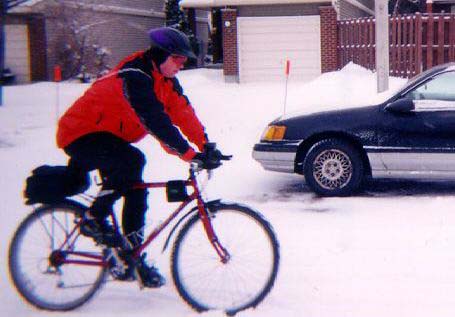
I would suggest that dressing for and experiencing winter cycling is no better or worse than cross-country skiing. Granted there is the complication of icy roads and traffic, but this adds to the challenge of cycling in less-than-ideal conditions, a cyclist can become a pedestrian any time the situation gets bad.
Try it – you’ll like it!
Also Read:
- 15 Best Bikes For Heavy Riders
- Bicycle Touring Experiences from Canada
- Bicycle Touring Experiences from United States
- Bicycle Touring Experiences from Italy
- Bicycle Touring Experiences from France
Should you have any questions or require further clarification on the topic, please feel free to connect with our expert author Graydon Patterson by leaving a comment below. We value your engagement and are here to assist you.

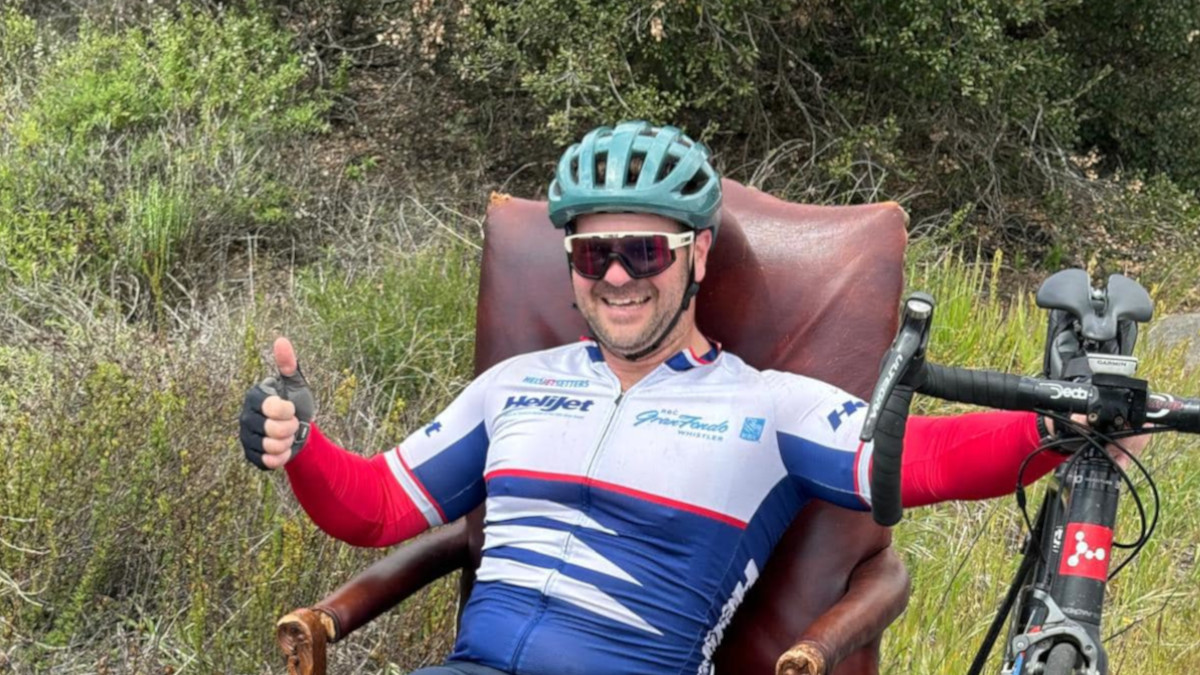
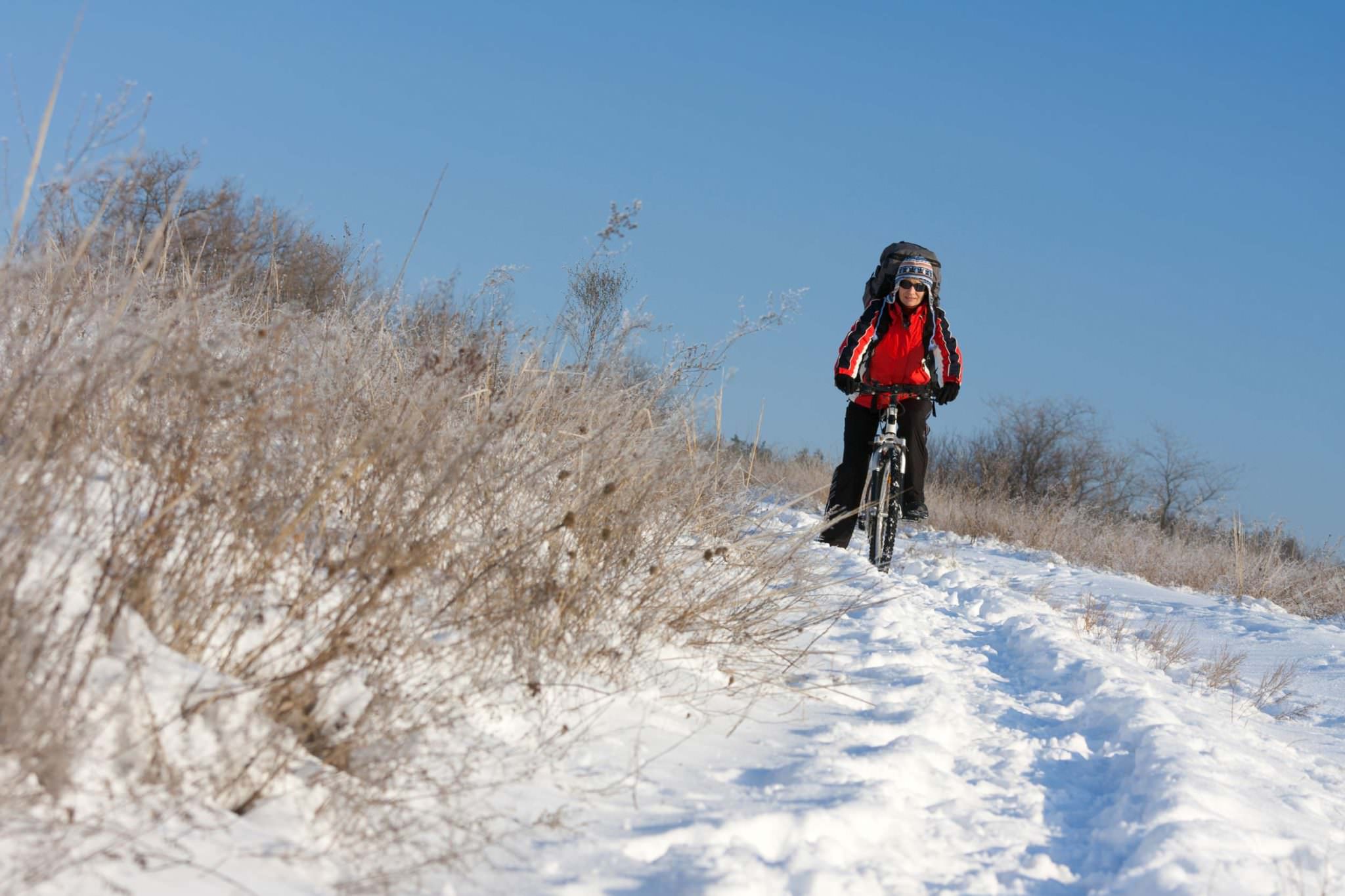
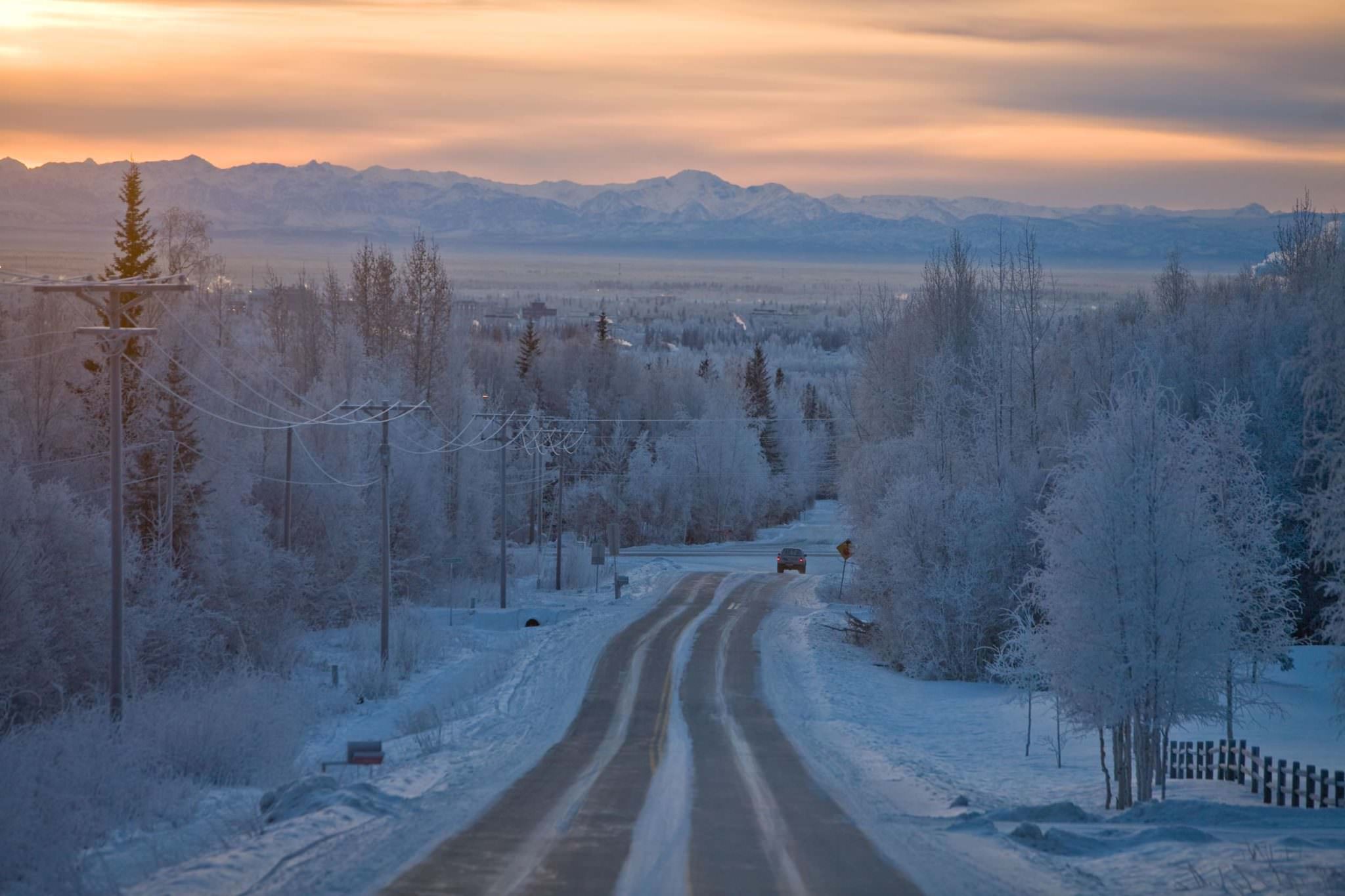
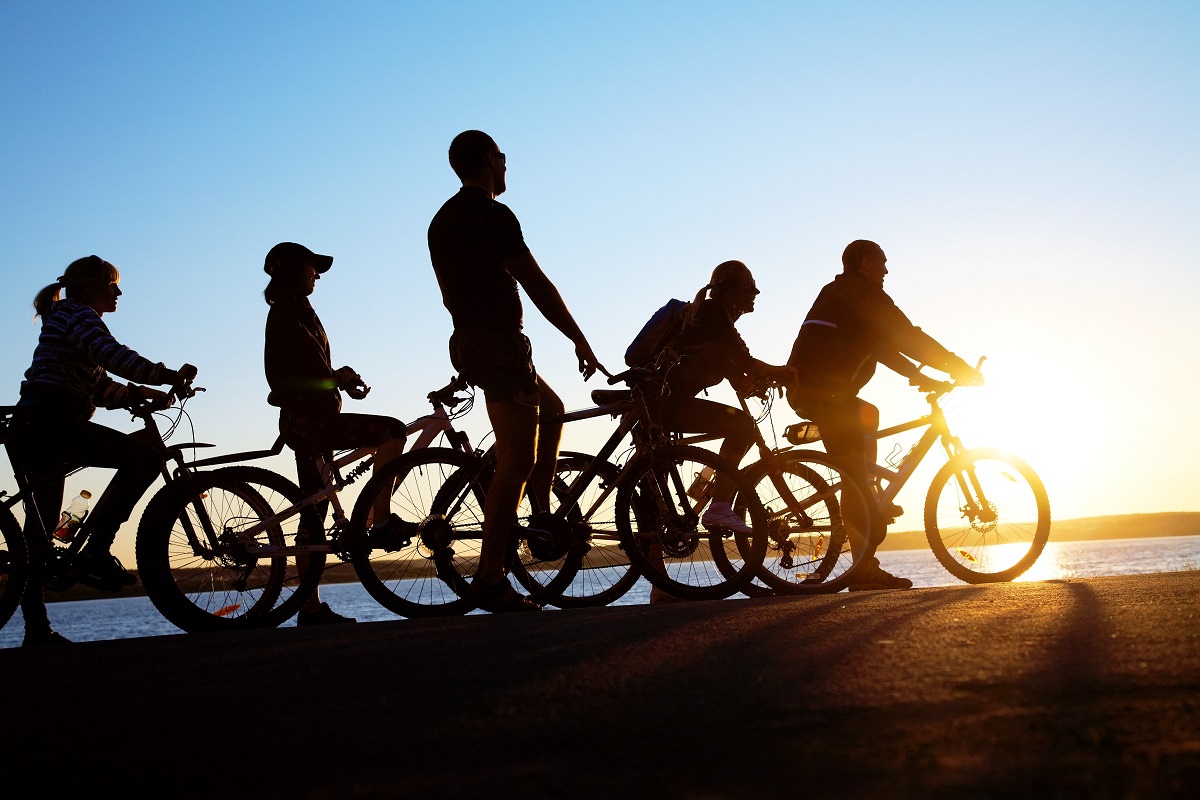
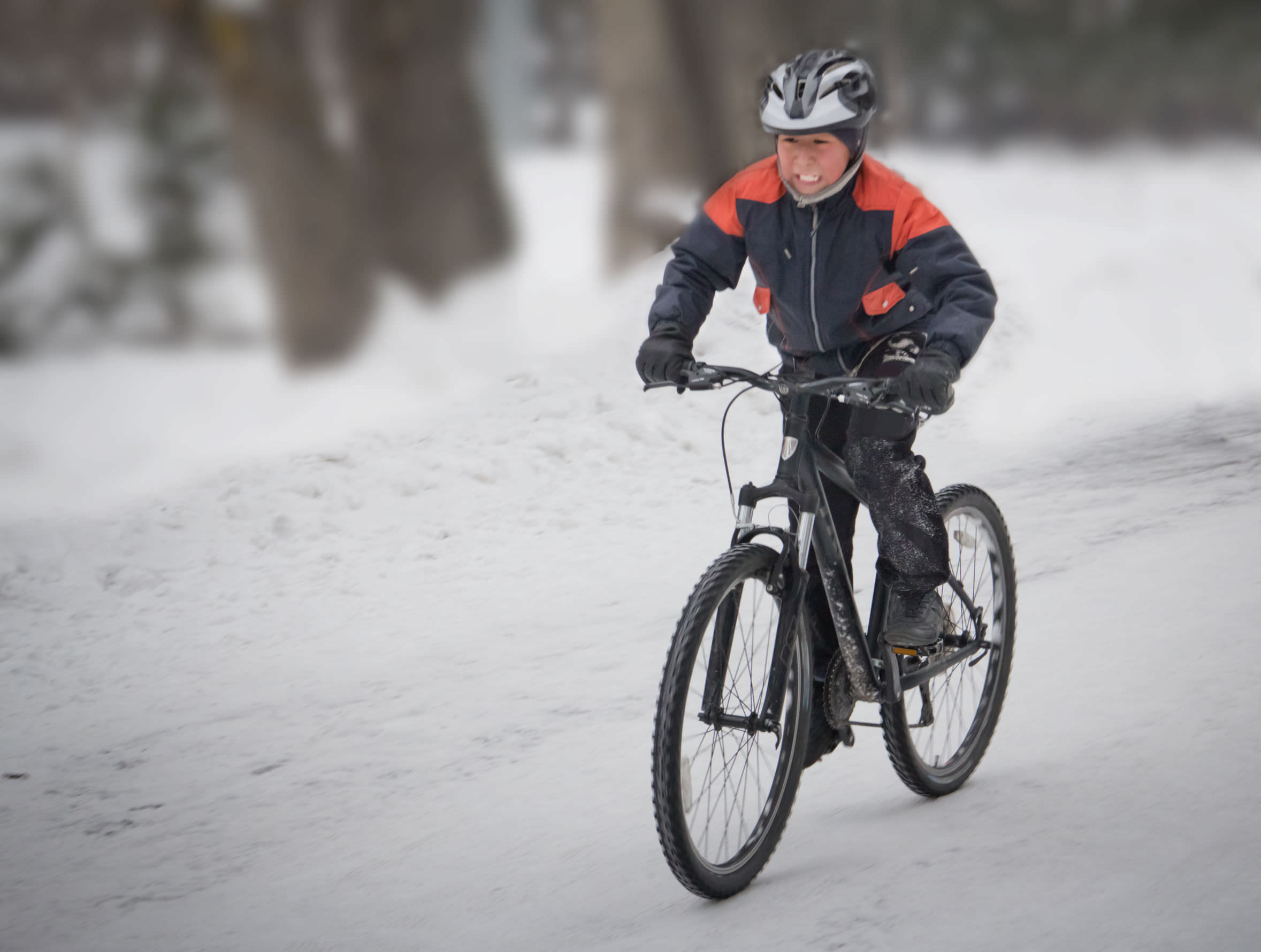
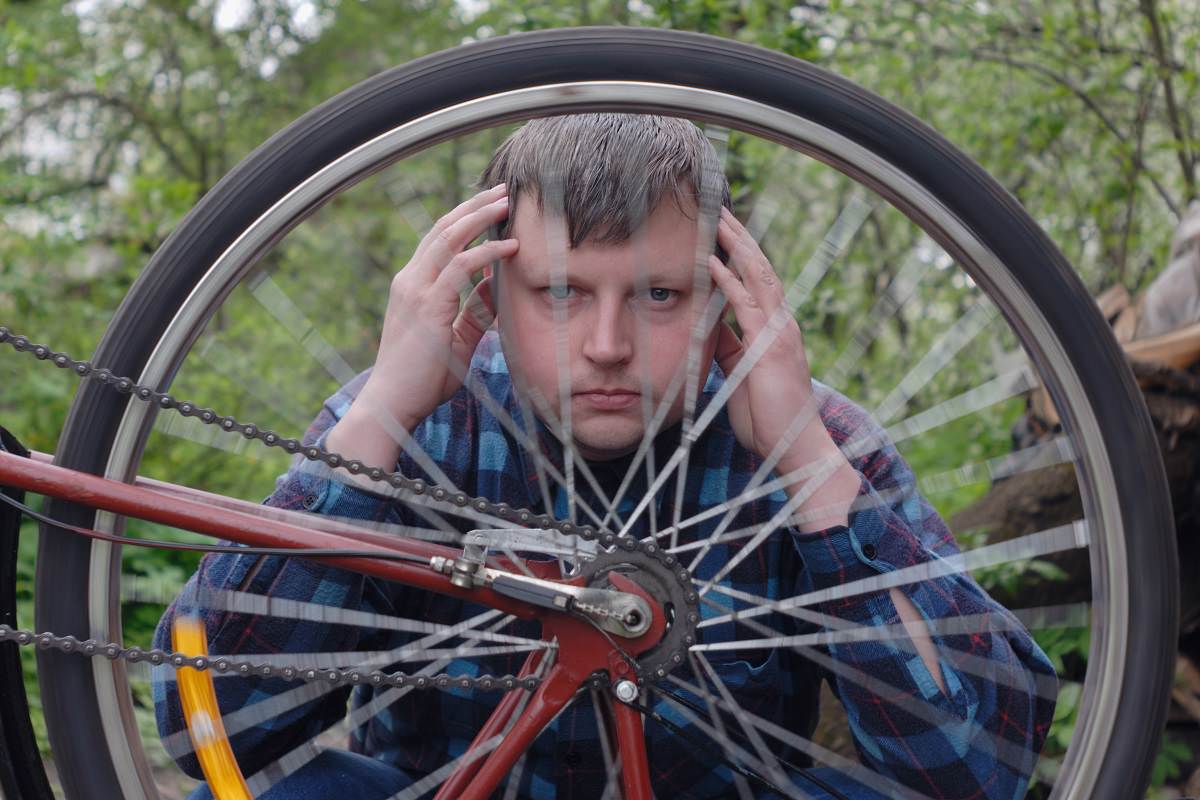
5 thoughts on “How to Commute In Winter- Cycling in Ottawa, Canada”
Fantastic content! Would you be okay if we posted it on our CN Cycle for CHEO website – our audience is filled with cyclists. We simply want to share great content that our audience would enjoy reading.
This article is what sold me on commuting to work in Ottawa from the foot of the Gatineau Park. Thanks so much for the tables and charts!
Have you considered a ski helmet instead of a bike helmet for winter riding? And ski goggles? I mean, those are meant for cold weather with wind as well as head and eye protection. And speeds for downhill skiing can be similar to biking, so the head protection necessary should be similar, right?
Thank you
Very informative and complete. I live in Ottawa and will start to commute in winter. Thank you. Please answer the question of Karen I have the same question.